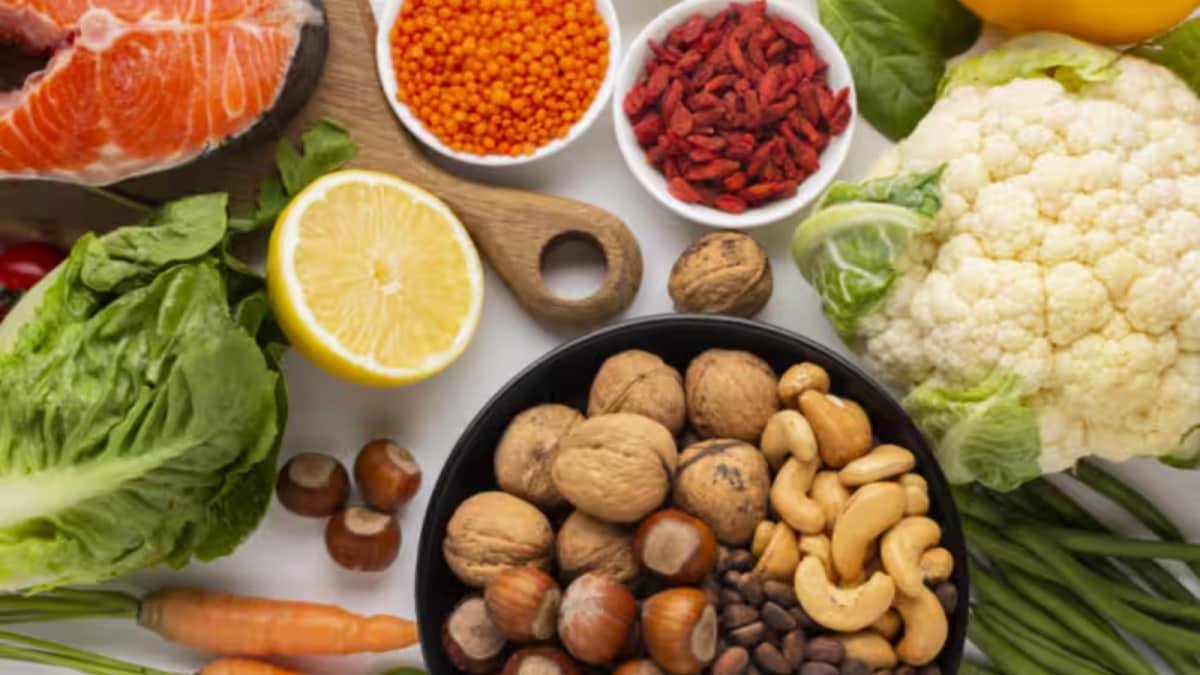Last Updated:July 07, 2025, 18:26 IST
Glutathione is primarily derived from dietary proteins such as beef, fish, and poultry
The sulfur in these foods provides the raw materials your body needs to manufacture glutathione, making them indirect mimics that support your natural production.
Every night, your body performs an extraordinary task of cellular housekeeping. While you sleep, trillions of cells are scrubbed clean by glutathione often called the “master antioxidant” which neutralizes free radicals and regenerates other antioxidants. These are your body’s best housekeepers, but they deplete with age. Fortunately, certain foods can step up and mimic glutathione’s powerful properties. Dr. Ridhima Khamsera, Clinical Dietitian shares all you need to know:
The Green Guardians
Broccoli contains approximately 4 nM of glutathione per gram and significant amounts of sulforaphane, which can increase your body’s glutathione levels. But here’s the fascinating part: sulforaphane doesn’t just boost glutathione—it actually mimics some of its protective functions. This compound activates the same cellular pathways glutathione uses to defend against oxidative stress, making broccoli a true glutathione doppelgänger.
Cruciferous vegetables like Brussels sprouts, kale, and cauliflower contain glucosinolates—compounds that break down into isothiocyanates when chewed. These molecules essentially “impersonate” glutathione by triggering the Nrf2 pathway, your body’s primary defense mechanism against cellular damage.
The Unexpected Supporters
Strawberries, citrus fruits, papayas, kiwis, and bell peppers are all rich in vitamin C. While vitamin C doesn’t directly mimic glutathione, it plays a crucial supporting role by recycling oxidized glutathione back into its active form—essentially giving your existing glutathione a second life.
Avocados deserve special mention for their unique approach. They contain both glutathione and monounsaturated fats, which help your body absorb fat-soluble antioxidants more effectively. This dual action makes avocados particularly efficient at delivering glutathione-like protection throughout the body.
The Sulfur Connection
Glutathione is primarily derived from dietary proteins such as beef, fish, and poultry. However, there are vegetarian sources of sulfur too especially cruciferous vegetables like broccoli, Brussels sprouts, cauliflower, kale, watercress, and mustard greens. The sulfur in these foods provides the raw materials your body needs to manufacture glutathione, making them indirect mimics that support your natural production.
The next time you’re at the grocery store, remember, you’re not just shopping for food. You’re selecting nature’s own antioxidant army, ready to defend your cells from the inside out.

Swati Chaturvedi, a seasoned media and journalism aficionado with over 10 years of expertise, is not just a storyteller; she’s a weaver of wit and wisdom in the digital landscape. As a key figure in News18 Engl…Read More
Swati Chaturvedi, a seasoned media and journalism aficionado with over 10 years of expertise, is not just a storyteller; she’s a weaver of wit and wisdom in the digital landscape. As a key figure in News18 Engl… Read More
- First Published:
#Natures #Glutathione #Mimics #Foods #Fight #Cellular #Damage #Health #Fitness #News



